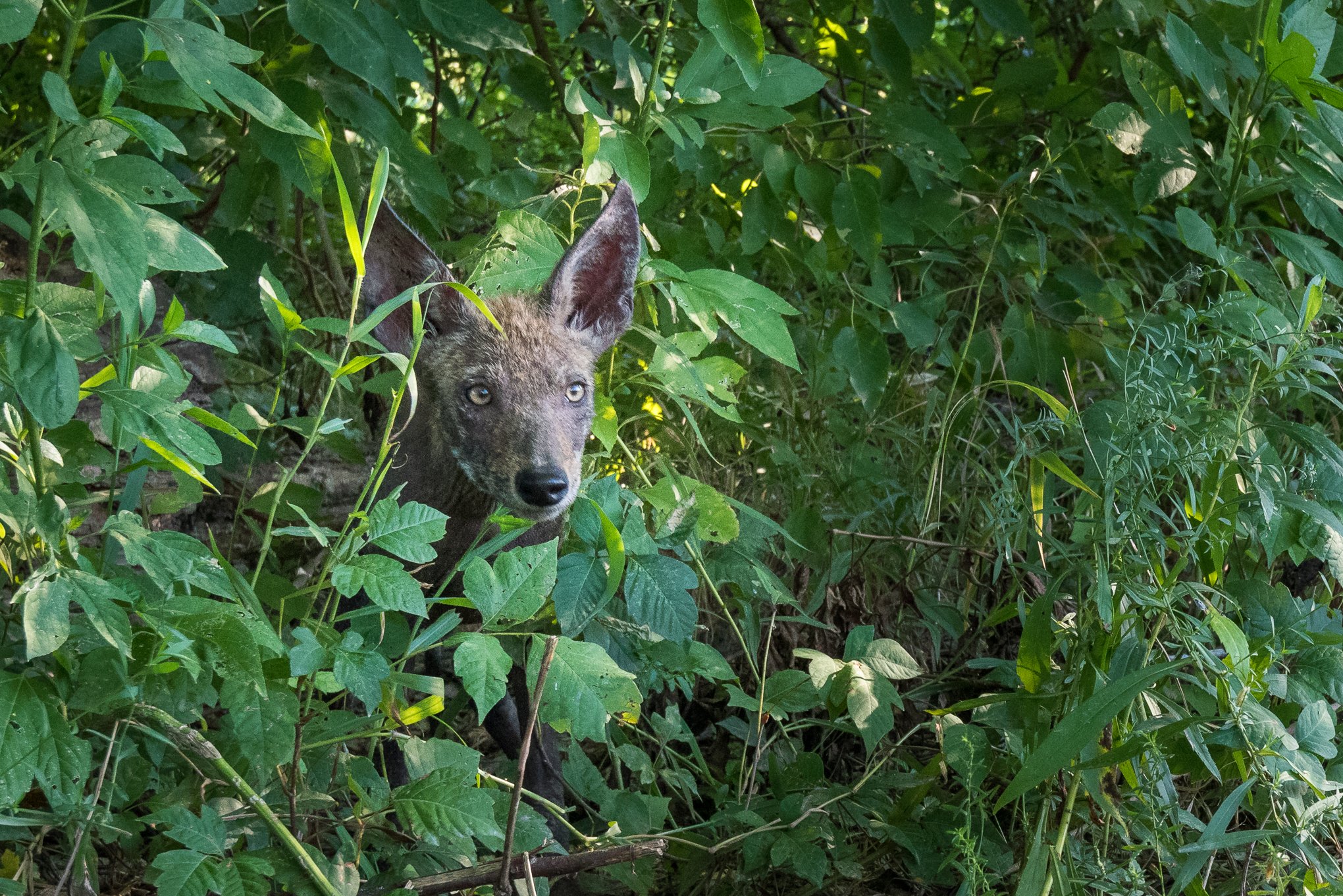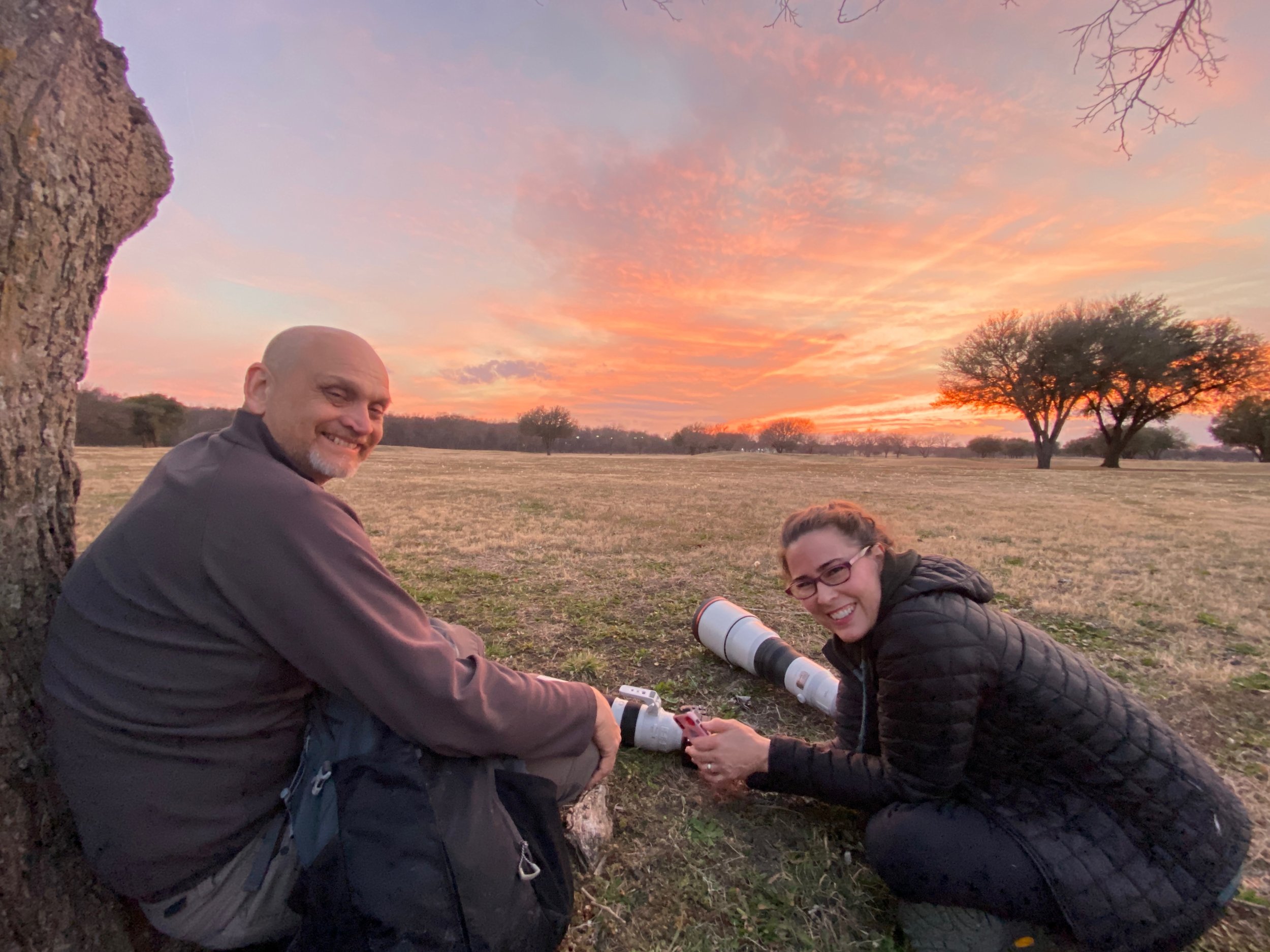CREATING COYOTE COEXISTENCE
Coyotes have been persecuted in the United States for over 150 years. They are feared and hated but also considered sacred by others. The often misunderstood “song dog” is a resilient and thriving species. We owe it to them and to ourselves to learn how to coexist.
SONG DOG WATCH IS MORE THAN A PASSION, IT’S A CALLING
What began as a journey to create stories about wildlife through our photography, we found our calling in 2017 in the Connemara Meadow preserve. We had seen a coyote with mange and we wanted to see if there was a way that we could do to help make it better. Since then, we have spent countless hours learning about the behavior and movement of coyotes and coyote families. That curiosity has led use to become strong advocates by educating humans about this misunderstood canid and promoting coexistence. The passion to learn more about coyotes also let us to have a better understanding about other wild animals and the important part they each play to balance the ecosystem. Regardless of the growth or neighborhoods, towns and cities, wildlife just continues to move forward doing the things they were designed to do. We share as much as we about coyotes and coyote behavior so we can better coexist with this keystone species so we can enjoy a more balanced ecosystem.
ABOUT US
Karin is a published wildlife conservation photographer born and raised in Dallas, Texas. She is especially passionate about wild canids and felids and uses her images to give wildlife a voice. For over a decade, Karin has been involved in animal rescue, rehabilitation, outreach and advocacy. She spends a lot of her time studying animal behavior remotely through camera traps. Karin’s images have been used to educate communities about coexisting with urban wildlife, document wild canid field research, and create awareness about the problems with exotic animal ownership.
Karin is the Texas State Coordinator for Project Coyote and works with The Canid Project as their Texas Outreach Representative. She’s a senior volunteer at In-Sync Exotics and serves on the Advisory Committee for Texas Native Cats. She’s a Texas Master Naturalist, and lastly, she’s a partner Photographer for Panthera, which is focused exclusively on conserving the world’s 40 wild cat species.
Photography Website: karinsaucedo.com
Instagram: @karinsaucedo
KARIN SAUCEDO
Roberto Saucedo is a life-long Texan, born and raised in El Paso and currently living in DFW. He has a background in creative marketing and has used that ability to hone skills in his passion for telling stories though wildlife & conservation photography. For the last 7 years, he has documented coyote behavior throughout north Texas through observation, photography and camera traps. Together with his wife Karin, Roberto serves on the Advisory Committee for Texas Native Cats and he also volunteers at In-Sync Exotics Wildlife Rescue.
Photography Website: robertosaucedo.com
Instagram: @rbtsaucedo
ROBERTO SAUCEDO
COEXISTING WITH COYOTES
Coyotes are a native North American species that evolved during the Pleistocene epoch. They adapted well to living alongside early indigenous people and continue to do so today. They’re highly resilient creatures able to adapt to threats and acclimate themselves in almost every environment, including cities and suburbs. As a keystone carnivore, coyotes play a critical role helping to maintain healthy ecosystems and species diversity. Because coyotes occupy an important space in the ecosystem and are everywhere it’s important to understand their behaviors to safely coexist. There are definite steps we can take to be coyote aware and safely live among America’s Song Dog. First is to be aware of our surroundings at all times especially when we are in or close to wild spaces. You should also manage the safety of you pets and children while walking in wild spaces, especially at dawn and dusk. It is also important to have an understanding of coyote behaviors and seasonal milestones that may explain why there are increased observations of coyotes out and about during the day. Below we have some resource links that will give you in-depth information and instructions on how to manage the safety of yourself, your pets, your children and, yes, even coyotes.
KEEP YOUR PETS SAFE
Negative encounters with pets generally involve coyotes who are either habituated to people or neighborhoods due to wildlife feeding, or coyotes who are protecting their territory and pups. Keeping your pets safe when coyotes are active require simple common sense steps. Never leave pets outside unattended, especially cats, small dogs or geriatric animals. Never feed wildlife, pet food and water should be kept indoors and you should always clean up after your dog. Pay attention to signage in natural areas and the ordinances that apply to the wild spaces you visit. Also, Keep your dog on a 6 ft, non-retractible leash in public areas and be aware of your surroundings and what your dog is doing at all times. If you do encounter a coyote and it gets too close for comfort while you’re with your dog, make and maintain eye contact and try to haze the coyote by standing tall, raising you arms and making a lot of noise. If small children are walking your dog, take over the leash immediately and keep everyone close to you - pick up your small dog or child. If the coyote doesn't leave, it's likely there's a den, pups, or food source that the coyote is protecting. Hazing will not work in this case. Don’t run, but leave the area calmly. Change your routine to avoid this challenging area for awhile.
COYOTES AND MANGE
Mange is a highly contagious skin disease caused by parasitic mites. These burrowing mites dig through the skin causing severe itching which leads to loss of fur, drying skin, open sores and infection. People who claim to have seen a hairless, dog-like creature often refer to them as “chupacabras” (a mythical creature that is thought to suck the blood from it’s victims). Unfortunately, this creature is often just an unfortunate coyote suffering the effects of mange. While coyotes can usually fight off the mites, It is believed that ingesting poisoned rats can lead to a compromised immune system through secondary poisoning. The deteriorating condition can lead to poor health. This can cause an extended state of suffering which can lead to eventual death through starvation or exposure. Luckily, it may be possible to treat coyotes with mange. Through proper application of certain medications, the prospect of “re-booting” the immune system can help the coyote return to a healthy state.
ADDITIONAL LINKS AND RESOURCES ON HOW TO COEXIST WITH COYOTES AND WILDLIFE
Here are a few great resources on coyotes. Click on the logos below to learn more!
MORE INFORMATION ABOUT COYOTES
Fossil evidence suggests the presence of coyotes during the Pleistocene Epoch. Their bones have been found in the La Brea Tar Pits in California, along with dire wolves & saber toothed cats. Larger mammals went extinct after the Pleistocene but the coyote persisted and evolved to be a smaller, more generalist canid that preyed upon rabbits and rodents, similar to the ones we know today.
Coyotes are found throughout 49 of 50 states and can live as individuals or in packs. They are highly versatile and adaptable. Coyotes are omnivores and can eat fruits, nuts and small prey such as rabbits, squirrels and rodents. They are also scavengers and will feed on carrion. Coyotes are wonderful creatures and, like all wildlife, deserve our appreciation and respect.



UPCOMING EVENTS
MARCH 13
Private Speaking Event
Armand Bayou Nature Center monthly meeting
6:30 - 8:30 PM
Armand Bayou Nature Center, Pasadena, TX
APRIL 3
Public Speaking Event
Galveston Bay Area Master Naturalists
6:30 PM
Texas A&M AgriLife Extension Service-Galveston County
4102 Main Street, La Marque, TX 77568
MAY 8
May 8 - Speaking Event
Texas Unites for Animals Conference
Mariott Watters Creek in Allen, TX
1:30 PM
APRIL 19
Table Event
City of Carrollton Earth Day Celebration
11 AM - 3 PM
Josey Ranch Lake Library at 1700 Keller Springs Rd
MAY 3
Public Speaking Event
Native Plants and Prairies Day
11:15 AM - Noon
The Bath House Cultural Center at White Rock Lake
MAY 22
Speaking Event
Collin County Master Gardener Club Monthly Meeting
11:15 AM
Meyers Park, McKinney, TX
July 15
Speaking Event
Alamo Area Master Naturalists
7 PM
Virtual Presentation
NOVEMBER 17
Speaking Event
Cross Timbers Texas Master Naturalist Chapter Meeting
7 PM
The Fort Worth Botanic Garden
WE WANT TO HEAR FROM YOU!
If this is a wildlife emergency, please contact the DFW Wildlife Hotline at 972-234-9453. Otherwise, please give us your information and we’d love to call you back. We are also available to give a presentation called “Living in Harmony with America’s Song Dog”. This 1.5 hour presentation covers various topics and can be presented online or in person (DFW area).
























